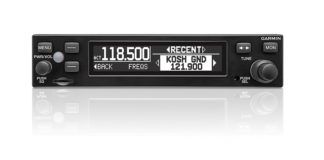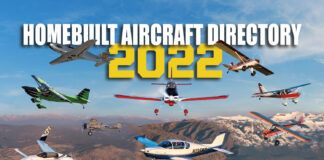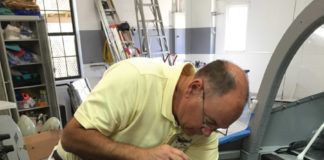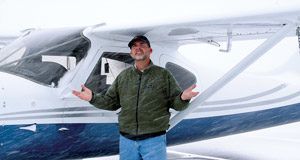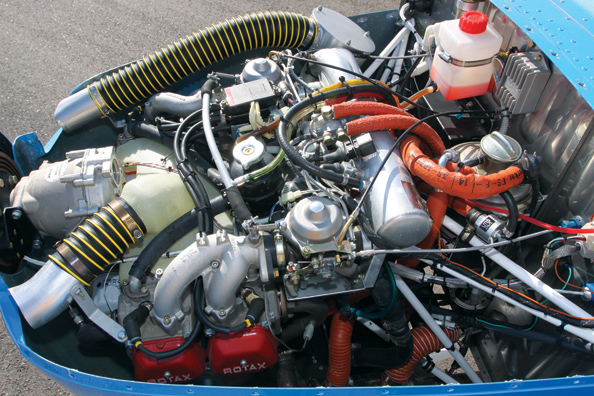
Some builders seem to think that Phase I flight testing is broken into two major portions. First flight. And everything after, killing time until the 25 or 40 hours have clicked over on the Hobbs. That’s not an accurate assumption even for well-known designs built exactly to plans, much less for an airplane covering new ground in design or execution.
No, for the builder with an "unknown" combination-a new engine in an established airframe, for example-Phase I flight test should be a series of missions that gradually reveal the true nature of the project along with being so full of carefully collected data that any problems can be understood and remedied well before passengers are allowed aboard or the airplane ventures too far from home. It’s about incremental testing, scientific process and extremely careful data gathering.
Sometimes your best intentions cause the most grief.
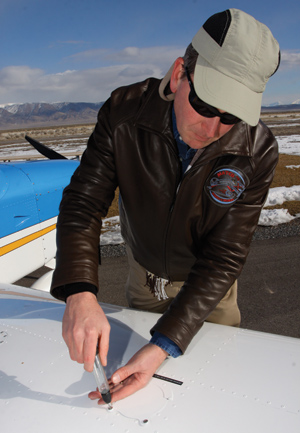
RANS S-19 builder George Happ.
As an example, let’s return to a project I reported on earlier this year. George Happ, a second-time RANS builder, had mated the turbocharged Rotax 914 to an S-19 airframe. Not only was he the first to combine these two-the standard S-19 was built around and originally flown with the 100-horsepower Rotax 912S-but he was also an early builder of a 19. As a result, there were times when he didn’t have a lot of direction on the basic kit, and no help at all solving the myriad complexities of the 914.
There are a few things we take for granted with this kind of alteration. First, not a lot of what you know about the 912-powered version will apply to the 914 for the simple reason that firewall-forward installations can be weirdly, amazingly variable. A small change in a minor thing can result in big operational excursions. Second, everyone knows that a turbocharged engine with more peak horsepower (115 versus the 912S’s 100) is going to create more heat. It stands to reason: Work liberated from burning fossil fuel comes from heat. More work means more heat.
So Happ was spring-loaded to believe that his 914-motivated S-19 might have cooling issues. He had the advantage of owning a 914-powered RANS S-7S and the intimate operational experience that came with it. No serious cooling problems presented themselves on the S-7S, he says, but he was nevertheless ready for some in the 19.
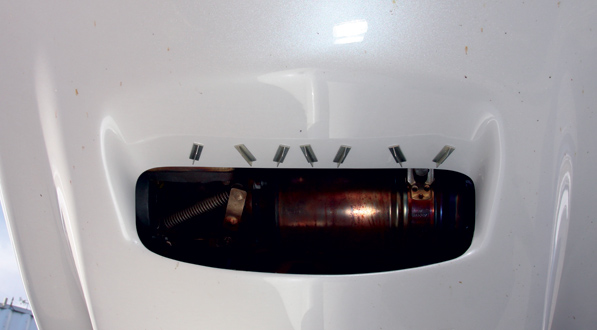
Seven vortex generators line the upper lip of the S-19’s radiator inlet duct. Happ was trying to keep the flow from tripping during the climb phase, which should have improved cooling. He needn’t have bothered.
Careful What You Wish For
"On the first flights [of the S-19], it was clear we had some cooling issues. From my experience base with the S-7, I knew what to expect. But the 19’s cylinder-head temps quickly got to the 260 to 265 range," says Happ.
Let’s pause for a second to bring the non-Rotax types up to speed. All of the four-stroke 900-series engines are liquid cooled. Actually, they’re somewhat hybrids, with water jackets around the cylinder heads and fins on the cylinder barrels. Some installations actively cool the barrels, while some do not. But the heads are where the heat is, so they are bathed in coolant that is circulated through an air-to-water cooler. Head temperatures are hybrids, too; a small resistance-type probe is screwed into one head on each side of the engine. This probe is in the coolant passage inside the head, but it’s also close to the source of the heat. As a result, the temperature measured there tends to be higher than the overall coolant temp. Rotax lists the 914’s max-continuous CHT (or Zylinderkopftemperaturen) as 120 Celsius or 248 F. (A higher limit of 150 C is permitted with a special type of coolant.)
What Happ saw very soon into the flight were temps above the max-continuous readings. That just wouldn’t do. "I took it for granted that we didn’t get enough air into the cowling, so we increased the size of the radiator inlet and generally tweaked the location of the radiator and the airflow to it. Those changes made a substantial improvement," Happ says. But he still was not flying in the peak heat of summer, and he had noticed that the temps would rise quickly during a long taxi. It wasn’t so much that the engine wouldn’t cool in the climb, but that it had a hard time recovering from the heat soaking it received on the taxi out.
Still, a few things didn’t add up. Happ knew from the S-7S experience that if the Rotax 914 reaches CHTs in the 230 range it would also tend to vent coolant. "If the S-7S got that hot, it would blow coolant out," he says. "But the 19 didn’t. We weren’t sure what to make of that, but we were fairly sure our readings were correct." He and Rocky Mountain Kitplanes’ Mark Pringle attributed the 19’s lack of blow-out as a quirk of that particular installation and left it at that.
Further work by Happ and Pringle focused on reducing temps. Vortex generators were installed below the leading edge of the radiator inlet. A fiberglass air plenum for the cylinder bases came aboard to help drop temps. Later, they installed a heat exchanger between the oil and coolant circuits, with an eye toward loading some of the water’s heat into the oil, which was running in the acceptable range.
Instrumental Music
Happ is a smart guy and appreciates that bad data can lead you astray. To eliminate that as a possibility, he tried different probes in the cylinder wells and double-checked the calibration of the TruTrak EFIS/engine monitor combination. Happ also used a laser temp tool on the heads shortly after landing and, further than that, installed an analog gauge into the well for ground testing. At that point, it appeared that the stock sensors were functioning properly, and the TruTrak engine monitor was reading them accurately.
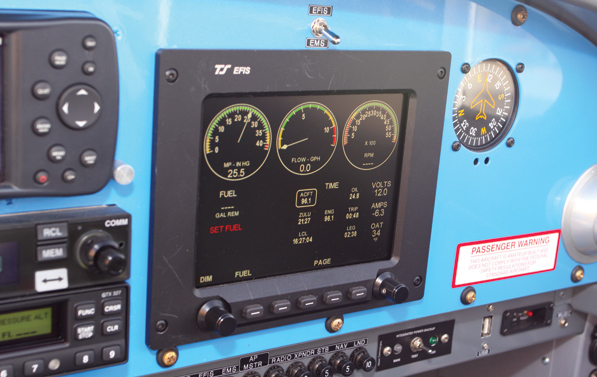
Happ’s RANS uses TruTrak instrumentation. A figurative disconnect between the engine instrument and the probes caused weeks of extra work.
The "Eureka!" moment arrived after Happ used a port on the water-to-oil heat exchanger to measure the coolant temp at that point. What he saw surprised him. When the head-mounted CHT probe showed 240 F, the probe in the heat exchanger said the coolant temp was just 175. "Something wasn’t right," Happ says, pointing out that the temperature difference between the two points just didn’t make sense. They should have been much closer.
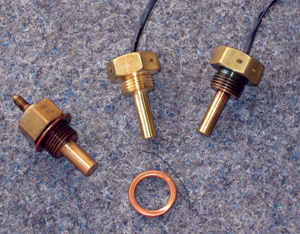
You must fully understand the characteristics of any probe you use to be sure the cockpit instrument reads correctly.
This realization made Happ look again at the character of the Rotax-supplied CHT probes. It turns out that they’re not linear over the working range. In fact, they are linear from ambient through about 210 F, but then change resistance radically as the actual temperature climbs. TruTrak had tested the Rotax probe but hadn’t run it through the entire range, at least not far enough to find the "knee" in the resistance-to-temperature curve.
"I never really had a temperature problem," Happ said, more relieved to know his engine is happy than angry at all of the time wasted chasing a phantom. "We’d created a data foundation on [junk], using too few data points to characterize the sensor. We dismissed it way too soon and just assumed we had a real problem. It cost us eight months of extra effort and time."
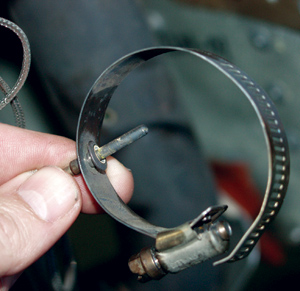
Exhaust-gas-temperature probes are considered wear items. If you have an apparently low EGT, switch probes with an adjacent cylinder to see if the indication follows the move.
Today, Happ is delighted with the 914’s performance in the S-19. A maximum-performance takeoff and climb gets the CHTs to 220 F (actual water temp of 215), while in cruise the cylinders run 210 to 215. "We were looking for a feel-good number and we found it," he said.
For the Rest of Us
Poorly calibrated instruments have led many pilots down the wrong path, or have hidden real problems from view. In the early days of testing my GlaStar Sportsman, I fought what I thought were excessively high oil temperatures. Mine was the first of the IO-390s to fly, and we’d hoped that the same oil cooler used on the 180-hp Sportsman would suffice. I was skeptical, but for the early flights in the cold Pacific Northwest the engine seemed happy. During the bulk of Phase I flight test back in Chino, California, however, the temps were alarmingly high.
Because of time constraints, I installed a massive oil cooler, large enough for an IO-540, and temps came down quickly. But further inconsistencies gave me cause to doubt the indications on the Dynon EMS-D120 engine monitor. Eventually, I discovered that the oil-temp probe’s resistance range was close enough to ground that any difference in ground potential from the instrument to the engine case would cause the needle to move. Even turning the alternator off in flight would alter the reading. Which one was right? I finally fitted a Grand Rapids probe, which uses a different set of calibration tables, to get a much more accurate reading. But not before buying and installing a Westach oil temp system temporarily to correlate these temperatures to other factors such as CHT, outside-air temp, altitude and power setting. It was a lot of chasing around because of one cranky instrument.
As you will find during Phase I flight test, once the engine is broken in, its temperatures and pressures will be amazingly predictable. For any combination of outside temp, power, airspeed and mixture setting, the critical temps will fall into a narrow range. This is great, because if you know what you’re looking for, you’ll be able to pick up problems right away.
However, you have to know what the baselines are, which is why it’s critical to carefully calibrate your instrumentation and follow all of the manufacturers’ recommendations. Make an effort to calibrate your fuel-flow instrument, if you have one, because this is one of the great indicators for power produced. Methodically validating the engine instrumentation can take up a good portion of your Phase I flight test but it’s time well spent. The difference between an instrument problem and a real problem can be weeks or months of agonizing trial and error. You wouldn’t walk through an unfamiliar house at night without looking for the light switch, would you?

![]()
Marc Cook – Former KITPLANES Editor-in-Chief Marc Cook has been in aviation journalism for 23 years and in magazine work for more than 25. He is a 4500-hour instrument-rated, multi-engine pilot with experience in nearly 150 types. He’s completed two kit aircraft, an Aero Designs Pulsar XP and a Glastar Sportsman 2+2.

